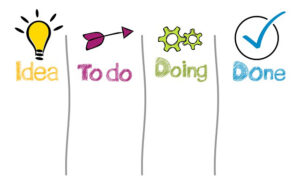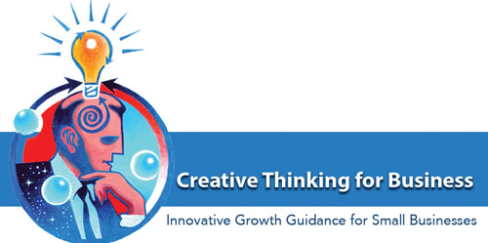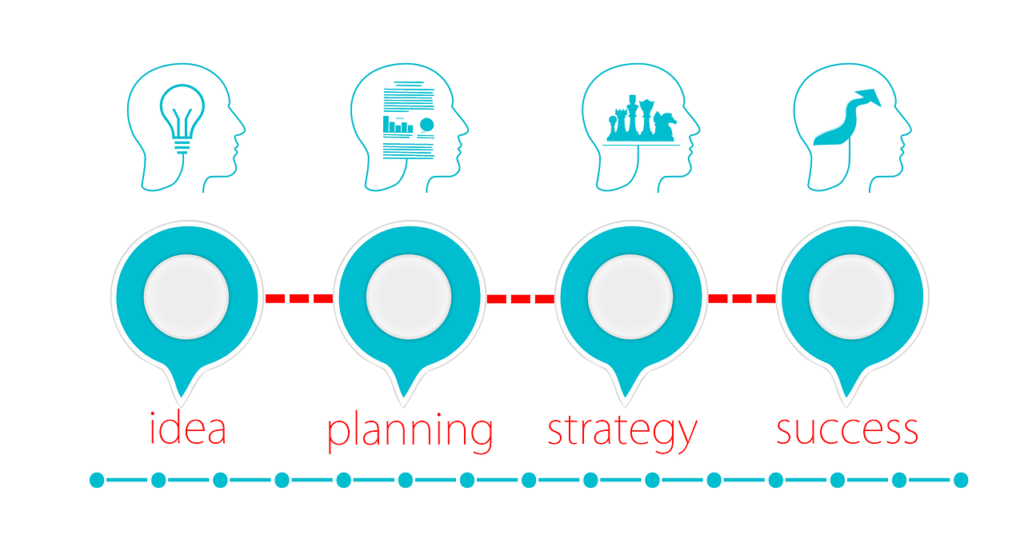Business development is a vast topic. There are so many ideas that it’s next to impossible for small business owners to create a workable strategy that increases revenue.
In this article, I’ll tie together the four critical elements of business growth. You’ll learn new definitions for standard terms like marketing, sales, CRM, and workflow.
Above all, when you’re done reading this article, you’ll have the understanding to approach business development in a new and expanded way
Marketing is actually ‘attraction’
Google the search term small business marketing. When you do, you’ll see “about 2,070,000,000 results” in less than 1 second (0.85 seconds).
You’ll find links for email marketing, the Spotify ad network, direct mail advertising, and the one-stop platform for marketing. That’s just the ads that show in the first four entries for the term.
When you research more in-depth, it makes it seem that marketing is some magic that you can spend countless hours on every waking moment.
The fact is, marketing is not that complex or confusing.
Ready for the simple explanation of what marketing is?
Marketing is identification, outreach, and attraction. 
Marketing’s only job is to identify potential clients, create an outreach campaign that addresses that potential clients interest, and attract those people to your selling system. Marketing is where “leads” move into the sales pipeline.
Marketing is nothing more than identifying your potential client and attracting your target market to your business by educating and providing value to them.
Please make a note. I’m not talking about the attraction marketing you see online everywhere (About 297,000,000 results). I’m talking about taking a deep dive to know your potential client and their interests as step #1.
Understanding your core target market is not very difficult. You can do this step quickly by asking two straightforward questions.
Question one is, “Who’s it for?”
In other words, what group of people receive the most significant value and are best served by engaging with and buying from your business? We can call this group of people your ‘audience.’
The next step in the target market identification process is to ask, “What’s it for?”
Ask yourself, “What is it about my business that serves my audience in the most valuable way possible?”
Then focus the information you share (called stories) to people who could receive exceptional value from your work.
When you do, you will have a group of qualified people coming to you for the value that you offer them. In sales-speak, we could call that a “pipeline of qualified leads.”
However, please, don’t think of them as leads. Think of them as people coming to you for the value you offer them. Focus on value provided and benefit gained, and the next step will be much easier to manage.
The system of selling (sales) turns attraction into revenue
Once you have attracted people who value and can benefit from what you offer, the method of selling turns the attraction and trust gained in marketing into revenue.
The problem is, for many people, selling strikes terror into their heart. Over the years, I can’t tell you how many clients have told me, “I’m not a salesperson. I am a _________(whatever the business service they deliver).
 The reason for fear is that many business owners don’t like selling. The reason is that they see it as having to “sell,” meaning talk someone into buying from them.
The reason for fear is that many business owners don’t like selling. The reason is that they see it as having to “sell,” meaning talk someone into buying from them.
If sales = talking people into buying for you, I would encourage you never to try selling anything.
Change the word selling into “serve.” Consider, how may I (my business) serve the best interests of the person I’m speaking to now.
If you attracted interest, you’re half-way home already. All you’ll want to do now is:
1. Find out what drew the attention of the person you’re talking to in the first place.
2. Ask about what that person is challenged by now that has them seek a solution to the issue.
3. Learn what the person you’re speaking with hopes to gain from talking to you. What would be the ideal solution to solve the challenge from their point of view?
4. Once you’re clear on what attracted your prospect’s interest in talking to you, the challenge your prospect wants to resolve, the best possible outcome (from their perspective), and what they hope to gain from talking to you, you’ll have all the information you need to recommend and invite.
5. After listening with full attention (called active listening) and taking notes to capture the high-points of the potential clients, needs, make your best recommendation. How can this person use your business to gain the outcome they desire.
Explain how you’ll accomplish that outcome for your future client, then invite them to participate and gain the outcome THEY are seeking.
When your system of selling uses these ideas, you are not ever selling anything. You’re recommending solutions to give your potential client the outcome they desire.
By following this idea, there is no pressure, no hype, nothing weird or sales-like.
The conversation is just you, as a caring business owner, helping someone gain an outcome they desire by engaging with your business.
CRM increases sales through second time purchases and referrals
Client Relationship Management (CRM) is the hot-spot for ongoing revenue growth every year.
Start by looking at everyone as a ‘client.’ Never view anyone who does business with you as a ‘customer.’ 
The reason is the mindset involved.
The word “client” means someone under the protection and guidance of another.
By contrast, the word “customer” means someone who buys goods and services from another.
As you manage the relationship with people who buy from you, view them as voting with their money for YOU to provide direction and service.
Stay in touch. Let the person know that you’re ready to serve them again whenever the need arises.
Make it easy for each client to refer people they know, who grapple with similar issues, to you.
Educate, care, and make it easy to connect.
As you continue to view clients as a group of people you serve, more people like them will begin to seek you out.
Workflow management really means “getting work done”
 All your great ideas and brilliant strategies only work when you accomplish them.
All your great ideas and brilliant strategies only work when you accomplish them.
Find an online tool you like to keep track of your tasks, plans, to-dos, and commitments. I’ve loved a tool called Evernote, since 2011. It helps me stay on track, plan effectively, and remember everything.
Since I started using it, I never wake up in the middle of the night panicked that I forgot to do something.
When you tie all these elements together, you have a complete (and fully functioning) sales process
Now you know that marketing is nothing more than knowing who you best serve and reaching out by educating this specific group of people to attract their interest to your business.
You learned that the word sales means to serve the best interests of people you can assist.
CRM is embraced by helping “clients,” and continuing to serve their needs. You’ll also make it easy for each person who does business with you to “share” your business with people they know who can benefit from your work.
And that all the great ideas and brilliant strategies only work when you accomplish them.
So using a tool like Evernote, or another tool you may like or use now.
Stay on track and productive, getting important work done every day and never waking up in the middle of the night panicked that you forgot to do something meaningful that day.

